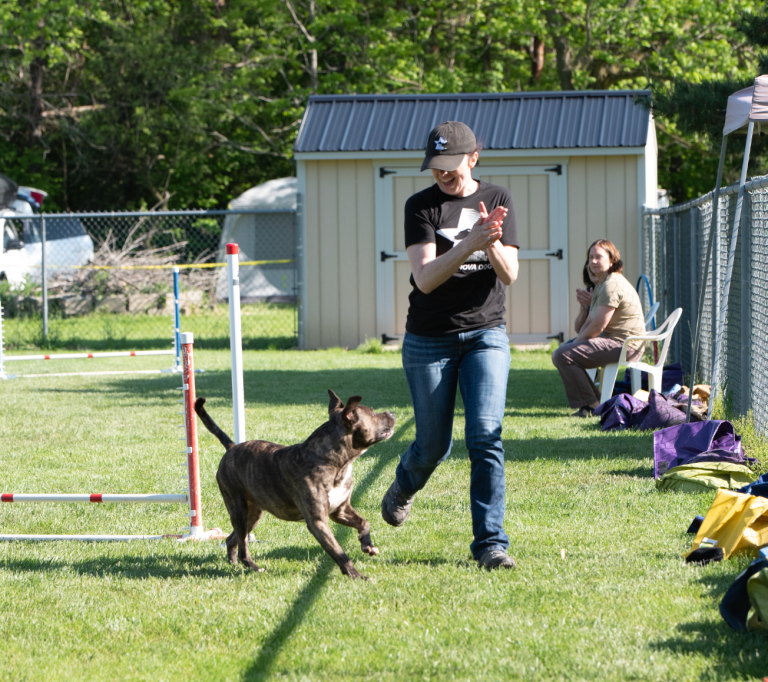Understanding ‘Thresholds’ In Dog Training And Why They Matter
Ever noticed how some dogs react almost perfectly to training commands, while others seem easily overwhelmed? This difference often comes down to understanding and managing their thresholds. Thresholds refer to the point at which a dog becomes too stressed to effectively learn or respond to cues, making it a crucial concept in effective training.
The concept of thresholds has roots in behavioral science, pinpointing the limits of a dog’s comfort zone. Research indicates that identifying thresholds can significantly reduce training time and stress for both the dog and the trainer. By recognizing and respecting these limits, trainers can create a more positive and productive learning environment for their canine companions.
Thresholds in Dog Training and Their Importance
Thresholds in dog training represent the point where a dog becomes too stressed to learn effectively. When a dog crosses this threshold, it might stop responding to commands, become anxious, or even act out. Recognizing and respecting these limits can create a more positive training experience for both the dog and the trainer.
The impact of thresholds on dog behavior is significant. When dogs remain within their comfort zones, they feel safe and can learn better. Moving past these limits can lead to frustration and fear, which can hinder progress and make training more challenging.
Identifying a dog’s threshold involves paying attention to their body language and reactions. Trainers can watch for signs like excessive panting, pacing, or a sudden lack of focus. These indicators help determine when it’s time to take a step back and allow the dog to regain composure.
Managing thresholds effectively also involves gradual exposure to stressors. By slowly increasing the intensity of training situations, dogs can adapt and expand their comfort zones. This approach ensures that dogs remain engaged and responsive, leading to better long-term results in training.
Train your dog to COME to you NO MATTER WHAT

What Are Thresholds in Dog Training?
Thresholds in dog training refer to the point at which a dog becomes too overwhelmed to respond effectively. This can happen due to fear, excitement, or distraction. Recognizing this limit helps trainers tailor their approach to keep the dog calm and engaged.
When a dog crosses its threshold, it may exhibit various signs. These include barking excessively, refusing to follow commands, or even becoming aggressive. Understanding these signals is crucial for maintaining a productive training environment.
Differentiating between a dog’s normal behavior and threshold reactions can be tricky. Observing how a dog reacts in different scenarios can provide valuable insights. For example, a calm dog at home may become anxious in crowded areas, indicating a lower threshold in such situations.
To manage thresholds effectively, trainers often use gradual exposure techniques. This involves slowly introducing the dog to the stressor in a controlled manner. This method helps in building the dog’s tolerance and expanding its comfort zone over time.
How Do Thresholds Affect Dog Behavior?
Thresholds play a significant role in shaping a dog’s behavior. When a dog exceeds its threshold, its ability to learn and follow commands diminishes. This can lead to increased anxiety, stress, and even unwanted actions such as barking or aggression.
The effects of crossing thresholds can vary from dog to dog. Some may shut down completely, refusing to move or comply. Others might become hyperactive or overly excited, making it difficult to regain their focus.
Recognizing and understanding these thresholds allows trainers to develop more effective training plans. For instance, if a dog becomes overwhelmed in busy environments, training in quieter settings first can help. Gradually increasing exposure to the stressor, over time, can build the dog’s confidence and tolerance.
Using structured and controlled environments can also minimize threshold breaches. Tools like harnesses, treats, or clickers can support this process. These techniques enable dogs to remain in their comfort zones, creating a more positive training experience.
Identifying a Dog’s Threshold
Identifying a dog’s threshold is crucial for effective training. Observing their behavior in different situations can reveal when they’re approaching their limits. Dogs may exhibit signs such as excessive panting, restlessness, or avoidance when nearing their threshold.
Body language is an essential indicator of a dog’s threshold. Raised hackles, pinned-back ears, or a tucked tail can signify stress. Recognizing these signals early can prevent a dog from becoming too overwhelmed.
Using a gradual approach helps pinpoint a dog’s threshold. Start with low-stress scenarios and slowly introduce more challenging elements. This method allows the trainer to see where the dog becomes uncomfortable and adjust the training accordingly.
Tools like clickers and treats can aid in identifying thresholds. Positive reinforcement when the dog remains calm near their limit can help expand their comfort zone. Incorporating these tools into training sessions ensures a stress-free experience.
Tracking a dog’s progress can also be beneficial. Keep a training log to monitor behaviors and reactions over time. Patterns can emerge that highlight the dog’s thresholds and help tailor future training sessions for better outcomes.
Techniques to Manage Thresholds Effectively
Managing thresholds effectively requires a blend of patience and strategy. One key technique is gradual desensitization. This involves exposing the dog to a stressor at low levels and increasing it slowly over time.
Create a calm and controlled training environment. Reducing distractions helps keep a dog below its threshold. This allows the dog to focus better and respond positively to training.
Positive reinforcement is crucial in managing thresholds. Rewarding a dog with treats or praise when they stay calm near their limit encourages them to extend their tolerance. Consistent rewards help build trust and reduce anxiety.
Use tools like harnesses or leashes to provide a sense of security. These tools help control the environment and ensure the dog feels safe. A well-fitted harness can also prevent sudden pulls or jerks that might cross the dog’s threshold.
Maintain a training log to track progress and patterns. Noting down specific reactions and improvements can give insights into what’s working. This information can guide future training sessions for better results.
Engage in daily routine practices. Regular, short training sessions integrated into daily life can help maintain thresholds. This approach allows for consistent exposure without overwhelming the dog.
Frequently Asked Questions
Here are some common questions and answers related to understanding thresholds in dog training. These insights can help you better manage your dog’s behavior and training.
1. How can I identify my dog’s training threshold?
Identifying your dog’s training threshold involves closely observing their behavior. Signs may include excessive panting, restlessness, or avoidance. These cues indicate your dog is nearing its threshold and may need a break.
By starting in low-stress situations and slowly increasing challenges, you can gauge your dog’s comfort levels. Keeping track of their reactions in various scenarios helps you understand and respect their limits. This approach ensures effective and positive training sessions.
2. What happens if a dog goes beyond its threshold during training?
When a dog exceeds its threshold, it may stop responding to commands or become anxious. This can lead to behaviors like barking, whining, or even aggression, making training ineffective and stressful for both the dog and trainer.
Recognizing and preventing the dog from crossing this limit is crucial for maintaining a positive training environment. Allowing your dog to relax and stay within their comfort zone promotes better learning and behavior modification.
3. Why is it important to manage thresholds in dog training?
Managing thresholds is essential for creating a safe and effective training environment. Dogs learn best when they are calm and not overwhelmed. Exceeding their threshold can lead to stress and hinder learning progress.
By understanding and respecting these limits, trainers can ensure more productive sessions. This approach helps in building a strong, trusting relationship between the dog and the trainer, resulting in better training outcomes.
4. Can thresholds change over time with effective training?
Yes, thresholds can change as a dog becomes more accustomed to various stimuli. With gradual exposure and positive reinforcement, a dog can learn to tolerate higher levels of stress without becoming overwhelmed.
This process is known as desensitization and is key to effective training. By carefully managing exposure to triggers, you can help your dog build resilience and confidence over time.
5. What are some techniques to manage a dog’s threshold during training?
Effective threshold management techniques include gradual desensitization, positive reinforcement, and creating a controlled environment. By exposing your dog to stressors slowly, you can help them build tolerance and confidence.
Using rewards like treats and praise when your dog remains calm can reinforce positive behavior. Tools and strategies that reduce distractions and provide a sense of security also contribute to keeping your dog within their comfort zone during training.
Conclusion
Understanding and managing thresholds in dog training are crucial for achieving effective results. By recognizing the limits of a dog’s comfort zone, trainers can create a supportive and positive learning environment. This approach not only improves the dog’s behavior but also strengthens the bond between the dog and the trainer.
Utilizing techniques such as gradual desensitization and positive reinforcement can make a significant difference. Keeping dogs within their threshold ensures they remain calm and receptive, leading to more successful training outcomes. Ultimately, this knowledge empowers both trainers and dogs to achieve their full potential.






